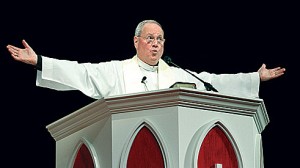 Archbishop Timothy M. Dolan of New York gave a stirring homily last month at the massive, sixteenth annual Atlanta Eucharistic Congress, which this year was devoted to vocations. Here are some of his comments, as reported by the Georgia Bulletin:
Archbishop Timothy M. Dolan of New York gave a stirring homily last month at the massive, sixteenth annual Atlanta Eucharistic Congress, which this year was devoted to vocations. Here are some of his comments, as reported by the Georgia Bulletin:
Archbishop Dolan said, “The harvest is abundant and vocations come from the Eucharist.”
“When we gather before the Eucharist we are in a posture of discipleship,” he said, like Mary, the model of attentiveness to God’s word and acceptance of God’s will.
“Once again we can picture ourselves walking on the shores of the Sea of Galilee and hear Jesus say, ‘Follow me.’ Once again we can watch in awe as he raises the son of the widow of Naim . . . and feeds the 5,000. . . . As we gather in front of the Eucharist, we are in a posture of discipleship, and from that there is a great harvest.”
At the Eucharist, he added, it is “dramatically evident” that “Jesus and His Church are one.”
When Saul, who had persecuted Christians, was knocked off his horse, he heard Jesus say, “Saul, Saul, why are you persecuting me?” Archbishop Dolan pointed out. “Christ identifies Himself with His Church. Jesus and His Church are inseparable.”
“Today, we have people who say, ‘I want Christ without the Church,’” he said. “We say, ‘Impossible.’”
“Jesus brings baggage and that baggage is His Church,” he added. “We call the Church the bride of Christ . . . the mystical body of Christ. . . . The bride is not always beautiful. The body is not always sleek. . . . Yes, there is something wrong with us. That is why we need Jesus, that is why we have a (Church) family.”
“Love for Jesus and His Church must be the passion for your lives,” he said.
Like this:
Like Loading...
 Check out this thought-provoking article on Mother Teresa of Calcutta that appeared earlier this month in The Wall Street Journal.
Check out this thought-provoking article on Mother Teresa of Calcutta that appeared earlier this month in The Wall Street Journal. Today is the feast of St. Lawrence of Brindisi. When reference is made to a “St. Lawrence,” however, we usually think of the third-century deacon and martyr who is even mentioned in the Roman Canon (Eucharistic Prayer I). This latter St. Lawrence, given his special patronage of those who barbecue, is indeed a fine summertime saint in his own right, but his feast isn’t till next month.
Today is the feast of St. Lawrence of Brindisi. When reference is made to a “St. Lawrence,” however, we usually think of the third-century deacon and martyr who is even mentioned in the Roman Canon (Eucharistic Prayer I). This latter St. Lawrence, given his special patronage of those who barbecue, is indeed a fine summertime saint in his own right, but his feast isn’t till next month. This is a photo of Mrs. Elizabeth Anikuzhikattil, mother of 15 children, who died last week at the age of 94 in her home in southwestern India.
This is a photo of Mrs. Elizabeth Anikuzhikattil, mother of 15 children, who died last week at the age of 94 in her home in southwestern India.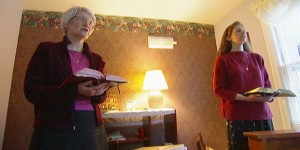
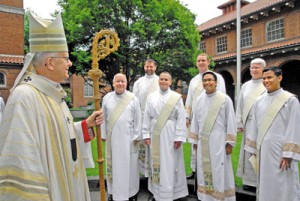 I thought I would end a busy week with this uplifting post from the Catholic Sentinel in Portland, Oregon. It’s about what Archbishop John Vlazny of Portland called “
I thought I would end a busy week with this uplifting post from the Catholic Sentinel in Portland, Oregon. It’s about what Archbishop John Vlazny of Portland called “ Archbishop Timothy M. Dolan of New York gave a stirring homily last month at the massive, sixteenth annual Atlanta Eucharistic Congress, which this year was devoted to vocations. Here are some of his comments, as reported by the
Archbishop Timothy M. Dolan of New York gave a stirring homily last month at the massive, sixteenth annual Atlanta Eucharistic Congress, which this year was devoted to vocations. Here are some of his comments, as reported by the 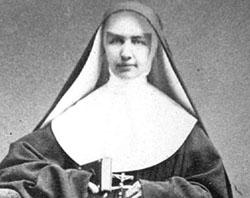 Last May we noted
Last May we noted  I encourage our readers to check out
I encourage our readers to check out 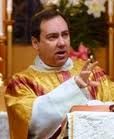 Fr. Z
Fr. Z